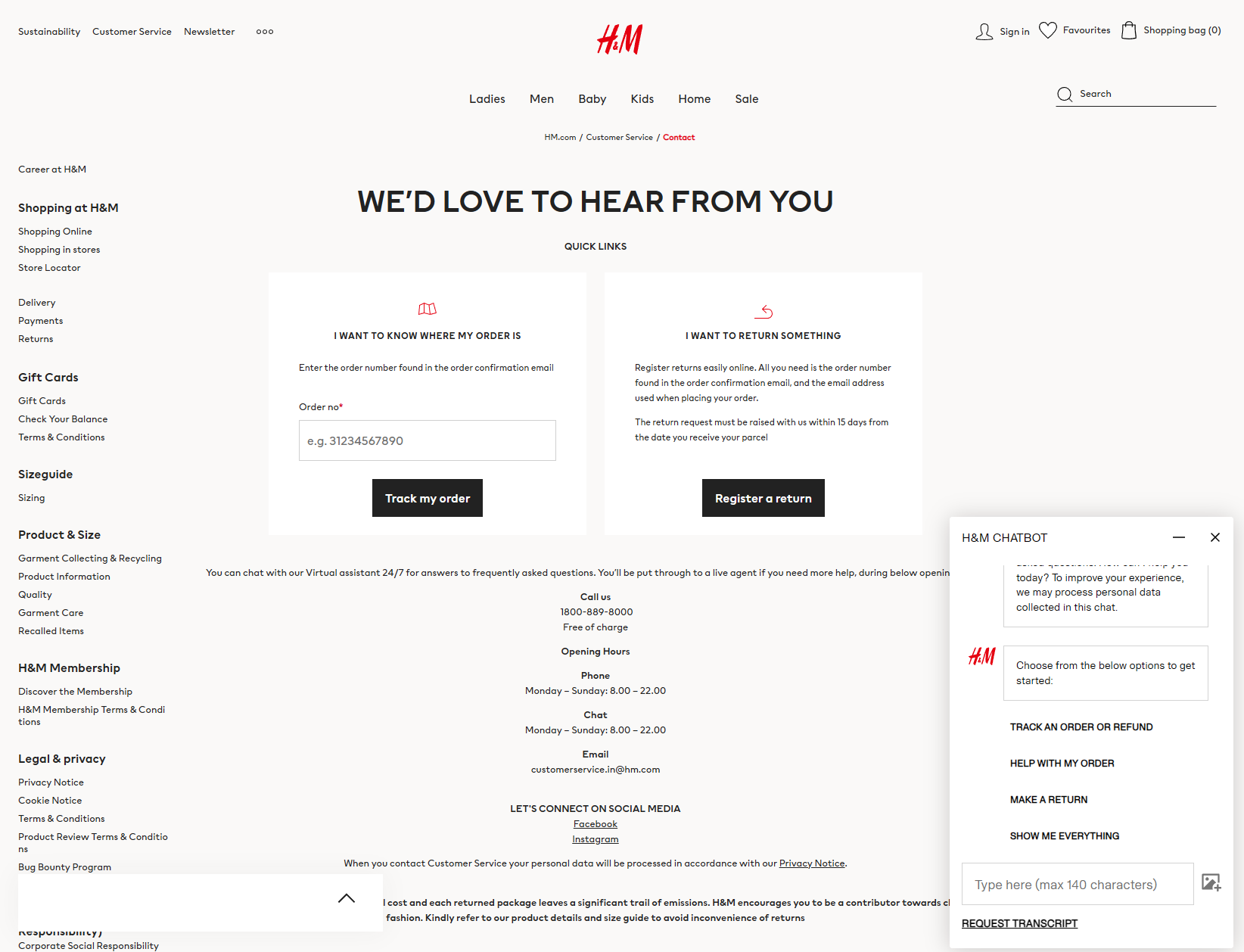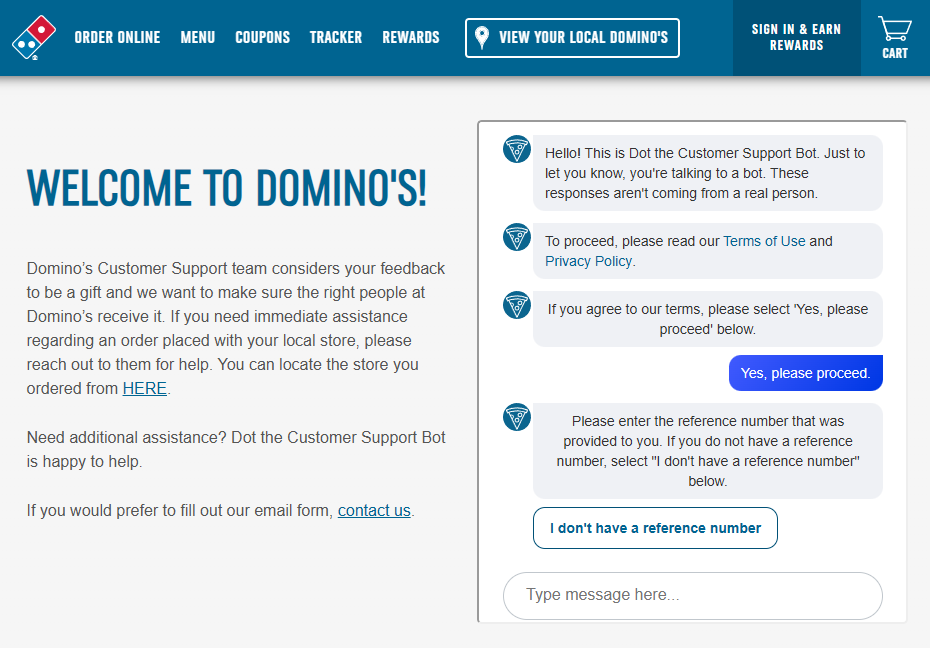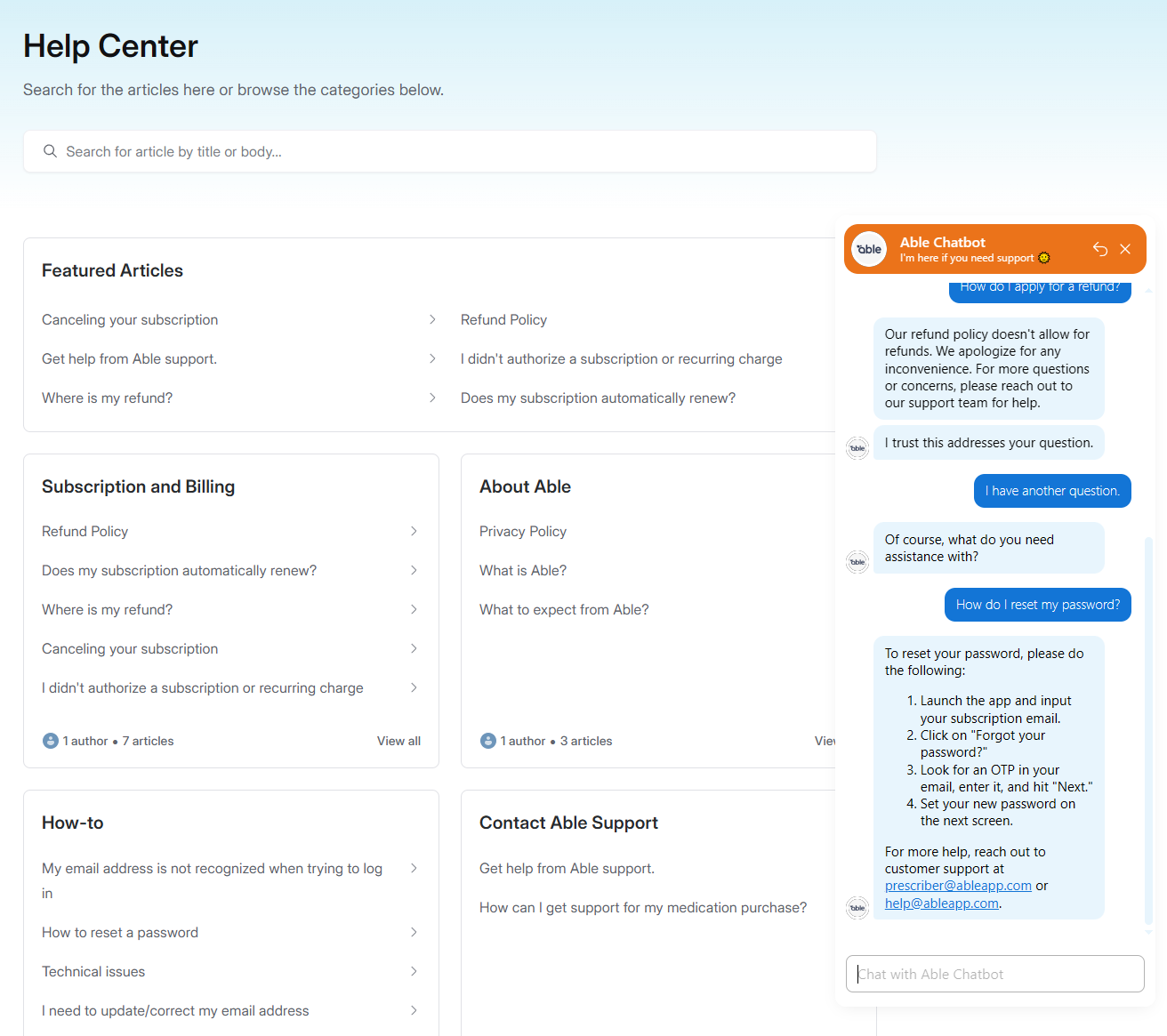AI chatbots are changing the way eCommerce stores connect with their customers. From answering product-related queries to providing personalized recommendations, chatbots enhance customer experience (CX) while automating key business functions.
More and more online stores are adopting AI-driven chatbots to improve customer engagement, recover abandoned carts, and optimize sales. These virtual assistants use Natural Language Processing (NLP) and machine learning to provide real-time support. As a result, they can reduce response times and improve overall efficiency.
In this article, we’ll explore how AI chatbots work and why eCommerce businesses use them. We’ll also showcase real-world chatbot examples from leading brands and what you can learn from them. Plus, we’ll guide you through the steps to implement an AI chatbot in your WooCommerce store.
Key Takeaways:
- AI chatbots offer 24/7 customer service, helping eCommerce businesses respond to inquiries, recommend products, and resolve issues without human intervention.
- Chatbots reduce cart abandonment by sending automated reminders and checkout support, boosting conversions.
- Leading brands like H&M, Domino’s, and Able use chatbots for personalization, reordering, and inventory-linked product recommendations.
- Two types of chatbots exist: rule-based (scripted) and AI-based (context-aware via NLP and machine learning).
- WooCommerce users can implement chatbots easily using plugins like Tidio, AI ChatBot for WordPress, WoowBot.pro, or Amio for multichannel support.
Table of Contents
What Are eCommerce Chatbots?
Chatbots in eCommerceare AI-powered virtual assistants designed to interact with online shoppers in real time. They simulate real conversations to help shoppers browse products, track orders, and get quick answers to common questions.
Modern eCommerce chatbots offer a wide range of features, including:
- Instant customer support. Answering common inquiries about products, shipping, and return policies.
- Personalized recommendations. Suggesting products based on the user’s browsing behavior and purchase history.
- Cart recovery. Sending automated reminders to users who abandon their shopping carts.
- Order tracking. Providing real-time updates on shipping status.
AI-driven chatbots work by using NLP and machine learning to understand and respond to customer queries in a conversational, human-like way. They continuously improve by learning from interactions.
From a more technical standpoint, there are two main types of eCommerce chatbots you should know about:
- Rule-based chatbots. These chatbots follow predefined scripts and respond to specific keywords.
- AI chatbots. These chatbots use machine learning to provide dynamic, context-aware responses, making them more sophisticated and effective.
By integrating AI chatbots, eCommerce businesses can streamline operations, enhance user experience, and boost conversions on their online stores.
Why do eCommerce Stores Use AI Chatbots?
AI chatbots have become essential tools for online stores, helping businesses improve efficiency and customer satisfaction. By automating key interactions, they reduce manual workload while enhancing the shopping experience.
Here are a few main reasons why eCommerce businesses are embracing AI chatbots:
1. 24/7 Customer Support
Unlike human agents, chatbots are available around the clock to answer customer inquiries instantly. They help shoppers with product details, shipping policies, and return requests, ensuring a seamless support experience.
2. Cart Recovery and Abandoned Cart Reminders
Abandoned carts are a major revenue loss for eCommerce businesses. AI chatbots can send users automated reminders, offer discounts, or assist with checkout issues. This is a great way to encourage customers to return to the store and complete their purchases.
3. Quick Answers to FAQs
Many shoppers have common questions about pricing, delivery times, or product specifications they’d like answered before making a purchase. Chatbots provide instant responses, eliminating the need for customers to wait for human assistance.
4. Personalized Shopping Experience
AI-powered chatbots analyze customer behavior and past purchases to deliver tailored product recommendations. This personalized approach not only enhances the user experience but also increases conversion rates and can help increase the average order value.
By integrating AI chatbots, eCommerce businesses can provide faster, smarter, and more efficient customer interactions.
3 AI Chatbot for eCommerce Examples for Inspiration
Let’s take a look at three real-world eCommerce chatbot examples that showcase their potential in enhancing customer experience and driving sales.
1. H&M Chatbot

H&M, the global fashion retailer, uses a chatbot to provide a personalized shopping experience.
Here’s how it works:
- The chatbot asks users about their style preferences and recommends outfits accordingly.
- It provides interactive outfit suggestions and allows users to vote on looks.
- Customers can purchase suggested items directly from the chat.
Key takeaways
What we like about this is how AI-driven personalization enhances the shopping experience, making it more tailored to individual preferences. The interactive elements, such as voting, help keep users engaged and create a more dynamic environment.
Additionally, the seamless integration with online shopping simplifies the buying process, making it easier and more convenient for customers to make their purchases.
2. Domino’s Dot

Domino’s Pizza introduced “Domino’s Dot” as part of its AI chatbot strategy to simplify food ordering.
Here’s a quick look at what it can do:
- Customers can place and track orders via chat on platforms like Facebook Messenger and Slack.
- It remembers past orders for quick reordering.
- The chatbot provides real-time order status updates.
Key takeaways
What we like about this is how chat-based ordering reduces friction in the buying process, making it smoother and more efficient. Personalized recommendations based on order history further enhance convenience by offering tailored suggestions.
Additionally, the multichannel availability ensures that ordering is accessible from various platforms.
3. Able Chatbot

Able is an AI-powered chatbot used by various online retailers to provide customer support and boost sales.
Here’s what the Able chatbot can do:
- Able answers customer inquiries about products, pricing, and availability.
- It integrates with inventory management to provide real-time stock updates.
- The chatbot can upsell and cross-sell based on browsing history.
Key takeaways
What we like about this is how AI-powered support reduces the need for human intervention, allowing for quicker and more efficient assistance. The real-time inventory updates improve customer satisfaction by keeping them informed and preventing stock issues.
Additionally, smart upselling increases the average order value, enhancing both the customer experience and business performance.
It’s clear to see that implementing a chatbot tailored to customer needs can provide a competitive advantage in the online marketplace.
How to Implement an AI Chatbot for Your Woocommerce Store
Implementing an AI chatbot in your WooCommerce store can significantly enhance customer engagement, streamline support, and boost sales.
Here’s what you need to do to integrate a chatbot effectively:
Step #1: Choose a Chatbot Plugin or Platform
Selecting the right chatbot solution is crucial for seamless integration with your WooCommerce store. We recommend these tools:
- AI ChatBot for WordPress is a free plugin that offers basic chatbot functionalities without the need for third-party integrations. It’s user-friendly and ideal for beginners.
- Tidio is a SaaS platform that’s compatible with WooCommerce. It provides live chat, chatbots, and email integration. It also offers AI-driven responses and can be customized to match your store’s branding.
- Amio is a platform that supports multiple messaging channels and integrates smoothly with WooCommerce. It allows for advanced chatbot customization and supports AI capabilities for enhanced customer interactions.
- WoowBot.pro is a dedicated WooCommerce chatbot plugin that offers features like product search, order status checks, and cart reminders. It’s designed specifically for WooCommerce.
| eCommerce AI Chatbot | Type | Key Features | Best For | Pricing |
|---|---|---|---|---|
| AI ChatBot for WordPress | WordPress Plugin | No third-party service needed, FAQ builder, simple chatbot UI | Beginners, lightweight sites | Free |
| Tidio | SaaS + Plugin | Live chat + chatbot combo, email integration, AI-driven replies | Mid-size to large stores needing automation | Freemium / Paid plans |
| WoowBot.pro | WooCommerce Plugin | Native WooCommerce support, product search, cart reminders, order lookup | WooCommerce-specific automation | Starts at ~\$39/year |
| Amio | SaaS | Multichannel support (Messenger, WhatsApp), advanced AI customization | Brands needing omnichannel communication | Custom pricing |
Step #2: Define Chatbot Objectives
Before deploying a chatbot, it’s essential to outline its primary functions. Defining clear objectives ensures that the chatbot meets both business goals and customer expectations.
Here are some features you might consider implementing:
- Customer support. Handle common inquiries about products, shipping, and returns.
- Sales assistance. Provide product recommendations based on user behavior and preferences.
- Order tracking. Offer real-time updates on the customer’s order status and delivery.
- Cart recovery. Send reminders to customers about abandoned carts and offer incentives to complete purchases.
It also helps to think in use case scenarios. Here’s an example:
If a customer abandons their cart, the chatbot can send a personalized message offering a discount to encourage them to complete the purchase.
Step #3: Train the Chatbot
Training your chatbot ensures it can handle various customer interactions effectively. To train your chatbot effectively, you’ll need to:
- Develop conversational flows. Create scripts for common scenarios, such as greeting customers, answering FAQs, and guiding users through the purchasing and returns processes.
- Integrate AI and NLP. Utilize AI and NLP to enable the chatbot to understand and respond to diverse customer inputs. This allows the bot to handle variations in language and provide accurate responses.
- Continuous learning. Implement machine learning algorithms that allow the chatbot to learn from past interactions and improve over time. This adaptive learning enhances the chatbot’s ability to handle complex queries.
Consider this real-world example: If a customer asks, “Do you have summer dresses in blue?” the chatbot should recognize the product category (Dresses) and color preference (Blue) to provide relevant suggestions.
Step #4: Test and Refine the Chatbot
Before launching, we recommend testing the chatbot to ensure it functions as intended. Follow these steps:
- Beta testing. Deploy the chatbot in a controlled environment to monitor interactions and gather feedback. This helps identify any issues or areas for improvement.
- Analyze performance metrics. Track metrics such as response accuracy, user satisfaction, and completion rates of desired actions (e.g. successful purchases).
- Refine based on feedback. Use the collected data to make necessary adjustments. This could involve updating conversational flows, expanding the chatbot’s knowledge base, or improving its ability to handle complex queries.
By following these steps, you can effectively implement an AI chatbot in your WooCommerce store, enhancing customer experience and driving business growth.
Frequently Asked Questions
What is an eCommerce Chatbot?
An eCommerce chatbot is an AI-powered assistant that helps customers with product searches, order tracking, and FAQs in real time. It simulates human conversation using machine learning and natural language processing.
How Can Chatbots Reduce Cart Abandonment?
Chatbots can send timely reminders, offer discounts, and assist with checkout issues when a customer leaves items in their cart, encouraging them to complete the purchase.
Which Chatbot Is Best for WooCommerce Stores?
Popular chatbot options for WooCommerce include Tidio, AI ChatBot for WordPress, WoowBot.pro, and Amio. Each varies in features, pricing, and channel support, with Tidio offering strong AI-powered live chat capabilities.
Do AI Chatbots Replace Human Support Agents?
Not entirely. AI chatbots handle repetitive and low-complexity queries, while human agents still manage complex, emotional, or nuanced interactions.
How Hard Is It to Set Up a Chatbot for My WooCommerce Site?
It’s relatively easy with the right plugin. Most tools offer a guided setup process. You’ll typically define goals, configure the chatbot’s behavior, and train it with common customer intents and responses.
Conclusion
AI chatbots are no longer a luxury — they’re essential for online stores looking to scale customer support and boost conversions.
If you’re looking to integrate an AI chatbot into your WooCommerce store, the right platform and proper setup can make all the difference. With tools like AI ChatBot for WordPress, Tidio, and WoowBot.pro, you can automate interactions and optimize conversions effortlessly.
Want to explore more AI tools to enhance your online store? Check out this guide for additional insights.
And if you’re building a WooCommerce store, Blocksy is the perfect theme to pair with your chatbot for a seamless, high-performance shopping experience.






